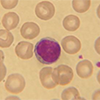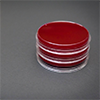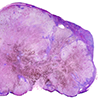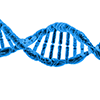Diagnosis of Diabetes Mellitus
Conventionally diabetes mellitus was diagnosed by high fasting or random blood glucose concentrations, or an abnormal oral glucose tolerance test (OGTT) whilst haemoglobin A1c (HbA1c) was used to monitor longer term glycaemic control in patients with known diabetes mellitus.
In 2011, the World Health Organisation (WHO 2011) recommended that HbA1c measurements should also be used to diagnose diabetes in the majority of asymptomatic individuals, and this recommendation has been agreed in the UK (NHS Diabetes 2011).
An HbA1c of 48 mmol/mol or more is consistent with diabetes. If the patient has no symptoms then a second HbA1c result must be obtained within 2 weeks, and if it remains ≥48 mmol/mol diabetes mellitus is confirmed.
HbA1c values of 42 to 47 mmol/mol suggest a high risk of future diabetes. Such individuals should be offered structured lifestyle education and support to delay/prevent development of diabetes, and have an annual HbA1c test.
HbA1c must be measured in an accredited laboratory undertaking recommended quality assurance procedures. Near patient testing is not appropriate when HbA1c is used for the diagnosis of diabetes.
HbA1c is now the preferred method to diagnose diabetes, except in the following situations where this test would be unreliable, and in whom the traditional methods of diagnosis with blood glucose concentrations remain the method of choice:
- Haemoglobinopathies
- Increased red cell turnover
- Anaemia (haemoglobin < 80 g/L)
- ?Type 1 diabetes or acute onset of symptoms of diabetes
- ?Gestational diabetes
- Children and adolescents
- Patients taking steroids and antipsychotic or other medications that cause a rapid rise in blood glucose
Despite this new approach, if an individual has abnormally high random or fasting blood glucose levels or abnormal OGTT, which would be consistent with diabetes on the traditional criteria, then that patient should be considered to have diabetes irrespective of their HbA1c value. Without symptoms of diabetes two abnormal tests of the same type (two high fasting/random blood glucoses or a diabetic OGTT) are required to confirm diabetes mellitus.
UHB, Clinical Chemistry, Clinical
- Created on .
- Last updated on .
- Hits: 5953







